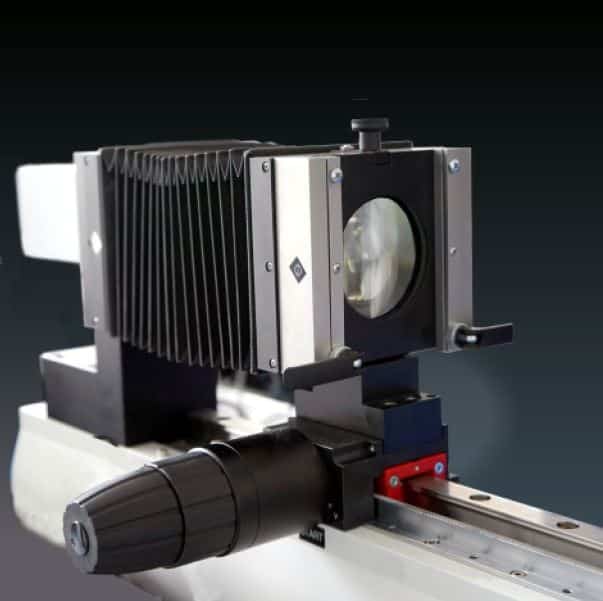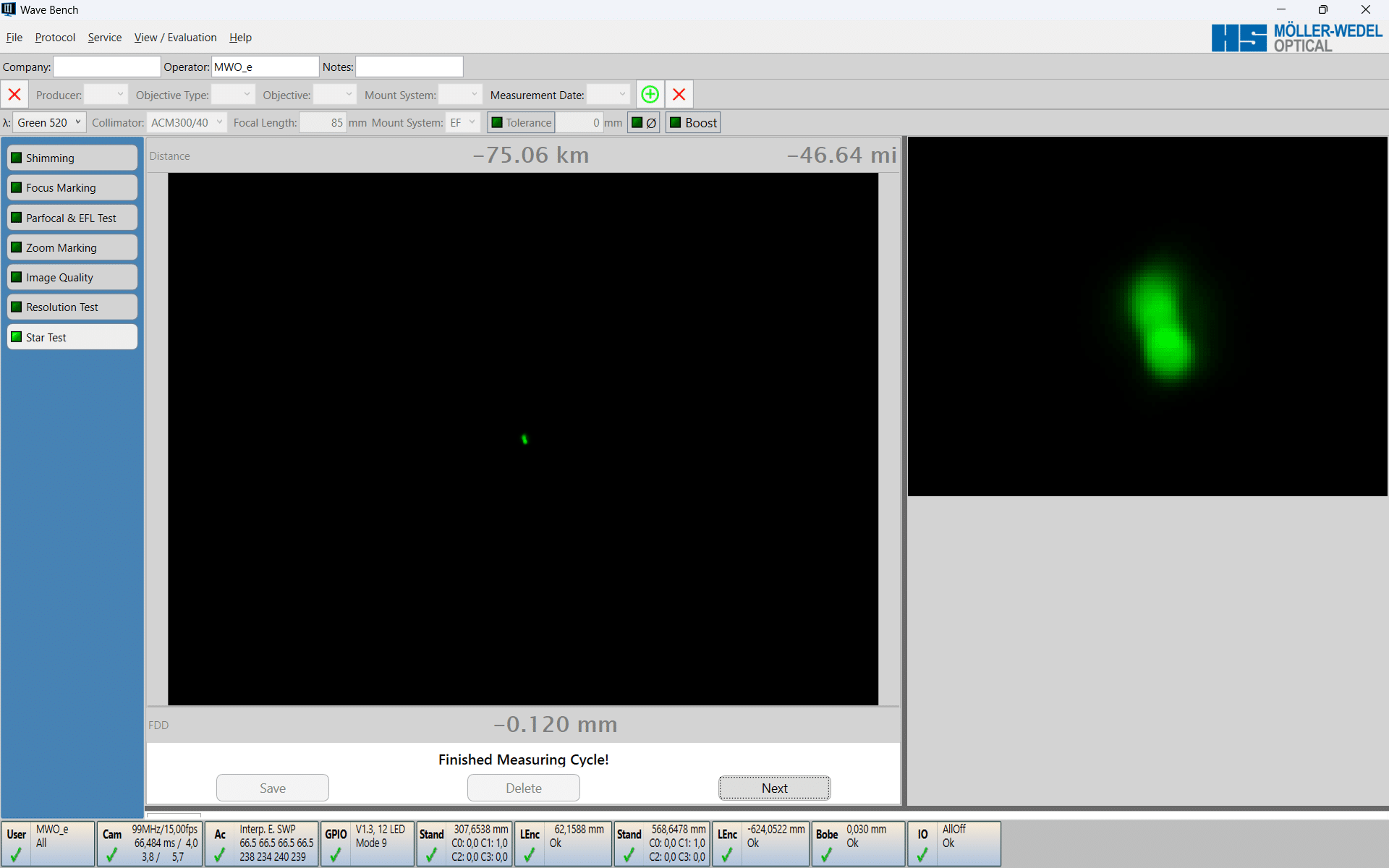
WaveBench with new ELCOMAT® wave
WaveBench Cine Autocollimator
WaveBench Cine Autocollimator
Product description
The WaveBench is a modular system developed for the film cine-rental business, consisting of an optical bench with autocollimator and modular components for adaptation to the customer’s measurement tasks. The new ELCOMAT® wave is used as the cine autocollimator. This is the digital successor to the well known Mark III-45S autocollimator developed by Möller-Wedel Optical, which has been used for decades in the rental and service sector for shimming.
WaveBench with Cine Autocollimator for Cine, Broadcast, Photo, Rental and Factory
The WaveBench covers the following measurement tasks, including documenting and storing the results in a database:
- Shimming - adjusting the flange focal distance of lenses
- Parfocal Test - checking the back focus distance during zooming
- Focus marking - determination of the focus distance marks
- EFL and Zoom Mark – check focal length and zoom markers
- Image Quality - testing and tracing of image quality and optical errors
- Resolution – measure resolution Performance with optional MTF Test module
- Star Test – alternative check for image errors with optional module
- Camera flange – determination of camera flange distance with optional module

Advantages and Benefits of the ELCOMAT® wave

Shimming and proof of Image Quality in one Device enables new cost-efficient workflows

Pioneering finite distance control and color inspection

Interchangeable Collimator Lenses

Cassettes for Adapting the Mounts

Accessories for the Traceability and Referencing

Star Test Module

Resolution check for objective classification to HD, 4K or 8K

Software functions

Shimming

Database Editor
Other tast-specific measurement processes

Resolution Test


